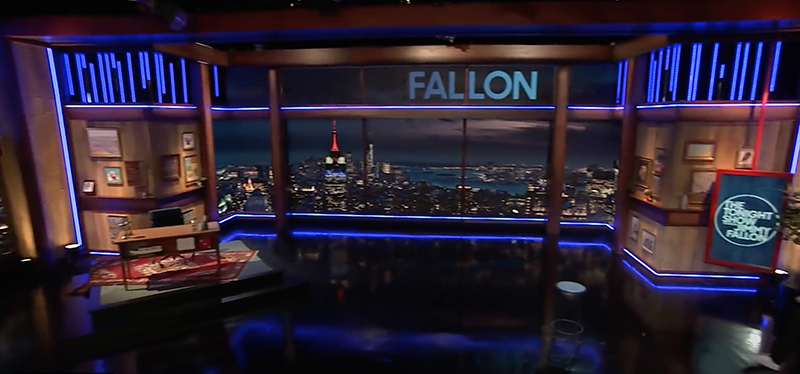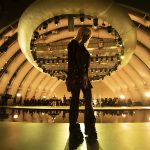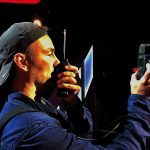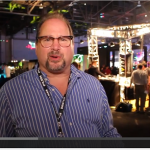
LD Fred Bock on Relighting The Tonight Show Starring Jimmy Fallon
When New York City shut down in mid-March 2020 to stem the spread of Covid-19, late night television talk show host Jimmy Fallon left his 30 Rockefeller Center studio and headed home. It quickly became obvious that they wouldn’t be returning to the studio for weeks if not months, so The Tonight Show Starring Jimmy Fallon — The Home Edition went into production. Fallon, with his wife shooting the show on an iPhone, made lemonade out of the pandemic lemons all spring, but happily (certainly for his wife/cameraperson) Fallon was able to return to the broadcast studio in the summer. On July 13, 2020, Fallon and company brought The Tonight Show back to 30 Rockefeller Center. A few changes, however, were in store — there is no audience, and instead of returning to their own studio 6B, they moved across the hall to a Covid-19 mitigated setup in studio 6A. The show’s lighting designer, Fred Bock, and production designer, Kelly Hanson worked on a tight schedule with a socially distanced crew to get broadcast ready in just two weeks. PLSN recently spoke with Bock about his new lighting design for the show.

Back to Work, in a Hurry
“Our first day back at 30 Rock since we left in March was at the end of June,” explained Bock. “It was very strange; like coming upon a ghost town. No one in March really thought that we were going to be out for as long as we were.” Hanson, Bock and the director met and discussed the plan for returning to the studio. The tight timeframe and logistics, including new Covid-19 safety measures, had to be factored into decisions. Due to Covid, there was a limit on 25 people in the studio at any one time, so they had to make some decisions on who came back and how to get the set and lighting loaded in. “The limits on people in the studio especially affects stagehands,” says Bock. “Right now, they’re doing the best they can, trying to get as many people back, but it’s tighter for all departments. For my normal electrics crew in the past, I had a programmer, the head and six electricians. Now I’m down to programmer, head and two electricians.”

Selecting the Lights
Bock explains, “We basically had a week to come up with a rough idea of what the plan was going to be before we went into the studio. In 6A, we’re using its video wall, and then we wanted to go with a cozy feel, bringing in to the studio a little bit of the feel of Jimmy’s home. Then the week before the first shoot we loaded-in.” Bock did use much of the gear that was in the 6A grid, but stripped some out to make room for some new choices. “I used the soft lights, but I did add additional equipment,” he says. “Even before I had a plot, I had to start thinking of some fixtures I wanted to have, besides the regular inventory already in 6A. I settled on Robe T1 Profiles because I also have the four of the T1s paired with the Robe RoboSpot followspot controllers to help in certain area — a near and far dead center; one upstage left and one upstage right. Two electricians operate the four units from underneath the audience risers — socially distanced, of course. I split the spots up as needed. Also, the Robe T1s mix very nicely with my Source Four ellipsoidals, so I’m really, really pleased with them. They’re really punchy and great as a front light. I’ve been very happy with them and the RoboSpot controllers; it’s been a time-saver when we’ve needed it.”
Bock uses ETC Source Four ellipsoidals as his key lights, and ETC Selador Desire D22 and D60 LED luminaires wash the set. “Most of the color on the set — all the warmth is coming from those lights,” says Bock. “Though we’re primarily LED here, we’re pretty much old school and go with a tungsten color temperature.” There is also a chroma key area where Bock is using Lite Panels’ Gemini fixtures and another area with some [GLP] X4 bars. All of the lighting control is via an ETC Eos TI console system. The additional lighting equipment was provided by WorldStage.

Accenting the Set with LED Tapes
Hanson’s design in 6A uses LED tape for accents so the electrics crew installed a vast amount of LED tape for the set pieces. Due to the limits on the crew numbers, the carpenters would work at night and the electrics team would follow the next morning. Bock put four electricians on the task and the install took a day and a half to lay it all in.
Bock, having worked for years with City Theatrical, Inc. products, used them for the LED tape systems. CTI’s Gary Fails worked directly with Bock and the electrics team on getting it all installed, up and running. “There’s a lot of LED tape in the set, it’s City Theatrical’s NuNeon,” Bock explains. “It’s fairly straightforward, other than trying to figure out where the controllers go, and Gary was instrumental in helping design that system and getting it installed. For the linear strips of tape all above on the headers, and because Kelly’s design had staggered lengths, I suggested that we use the [CTI] QolorPIX LED tape. We cut from 16-foot lengths of the QolorPIX and jumped between pieces to simplify it.” The LED tape system uses CTI QolorPIX tape controllers as well as QolorFLEX 5x8A dimmers. The four CTI controllers, “has every port used,” notes Bock. “All of the City Theatrical products work really well, and their LED tapes give us a good range of colors. We tend to fall into five or six colors in television for the most part and the City LED tape always produce those colors really well. The diffusion works well for the camera; for the eye candy we have.”
Creating Light Boxes with LEDs
For light boxes, Bock has a tip he got from the sign industry — to use day/night acrylic sheets instead of milk Plexiglas. One side of day/night has a P95 level of diffusion, a light frost; the other side has a neutral density or a smoke finish. Bock explains, “If you’re going to make a light box, especially for camera, you don’t want to use milk Plexi, because when front light hits it, the milk Plexi really de-saturates the color of the LEDs backlighting the piece. With the day/night acrylic, you have the ND side face the camera, and the diffusion side faces the LEDs. It’s like a P95 level of diffusion, and it spreads the light out really nicely. When it’s unlit, it’s black, and when lit from behind with the LEDs, it’s whatever color you mix or if you want white you mix your LEDs to white. It works great on camera.”
Bock concludes, “It is nice to be back in the studio. I feel for everyone that is just stuck at home right now; not knowing what the future’s going to hold. I’m one of the lucky ones. Everyone that works on the show is feeling pretty lucky.”
Current Lighting Crew for The Tonight Show Starring Jimmy Fallon
- Lighting Designer: Fred Bock
- Electrics Head, Studio 6A: Devin Lindow
- Programmer: Josh Hinden
- Studio 6B Head Electrician, Set LED installation: Pip Biancamano
- Set LED installation: Niklas Anderson, Nick Rykert
- Robo Spot operator: Ben Warner


